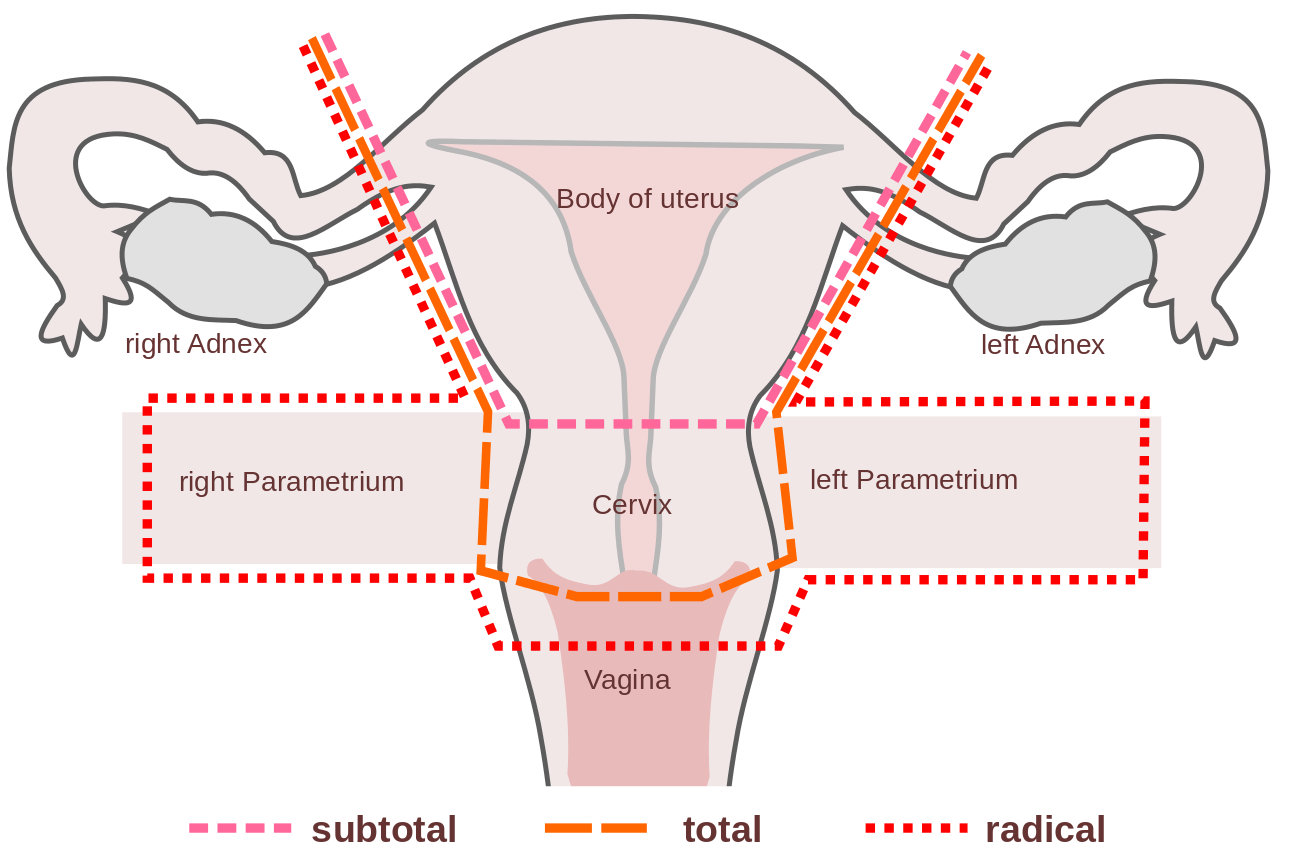Radical Hysterectomy
Hysterectomy is an activity to evacuate a lady’s uterus. A lady may have a Hysterectomy for various reasons, including: Uterine fibroids that reason agony, dying, or different issues. Uterine prolapse, which is a sliding of the uterus from its ordinary situation into the vaginal trench.
The most well-known purposes behind having a hysterectomy include: overwhelming periods – which can be brought about by fibroids. pelvic torment – which might be brought about by Endometriosis, fruitlessly treated pelvic provocative infection (PID), adenomyosis or fibroids. prolapse of the uterus.
Radical hysterectomy is an operation done to treat some cancers of the cervix. The surgeon takes out the uterus and the ligaments (tissue fibers) that hold it in place. The cervix and an inch or 2 of the vagina around the cervix are also removed.
Hysterectomy means the removal of the uterus for various conditions such as heavy uterine bleeding/heavy periods, fibroids, endometriosis, infertility, lower abdominal pain or chronic pelvic pain, ovarian cysts and cancers of the gynecologic organs. Radical hysterectomy refers to the excision of the uterus en bloc with the parametrium and the upper one-third to one-half of the vagina. The surgeon usually also performs a bilateral pelvic lymph node dissection.
It is nearly painless procedure with utmost comfort and care provided to the patient. The patient is usually discharged the next day with even a brighter smile.
What is the difference between a total and radical hysterectomy?
A total hysterectomy removes the whole uterus and cervix. In a radical hysterectomy, a surgeon removes the whole uterus, tissue on the sides of the uterus, the cervix, and the top part of the vagina. Radical hysterectomy is generally only done when cancer is present.
Why to do Radical hysterectomy
Cancerous tumor within the uterus
Large fibroid
Chronic and excessive bleeding (menorrhagia)
Uterine prolapse
Endometriosis
Adenomyosis (thickening of the uterus)
Chronic uterine infection



